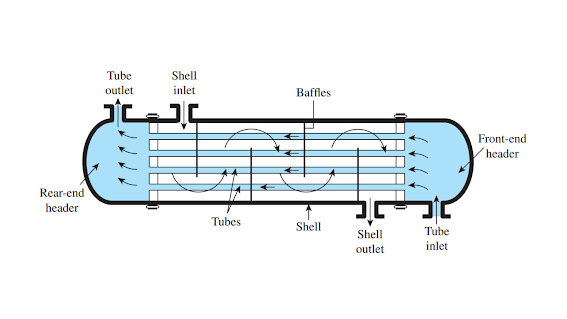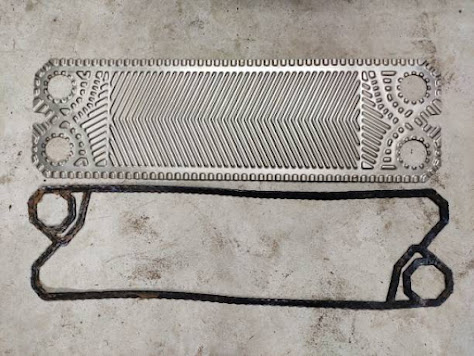Plate Heat Exchangers: Compact Solutions for Optimal Thermal Performance
In the realm of heat transfer technology, plate heat exchangers have emerged as versatile and efficient devices that play a vital role in various industries. These compact marvels have revolutionized the way heat is transferred between fluids, offering optimal thermal performance in a space-efficient design. In this article, we delve into the world of plate heat exchanger, exploring their working principles, advantages, applications, and the ways they contribute to optimal thermal performance.
Understanding Plate Heat Exchangers
A plate heat exchanger is a compact and efficient device designed for transferring heat between two fluids without direct contact. It consists of a series of corrugated metal plates stacked together with small gaps between them. These plates create multiple channels for the two fluids to flow in alternating directions. The design maximizes surface area contact and turbulence, promoting efficient heat transfer.
Working Principles
The working principle of a plate heat exchanger revolves around the concept of counter flow or parallel flow. In counter flow, the two fluids enter the exchanger from opposite directions, allowing for the highest temperature difference and efficient heat exchange. In parallel flow, the fluids enter from the same end and move in the same direction, making it suitable for applications with closer temperature ranges.
As the fluids flow through their respective channels in the heat exchanger, heat is transferred from the hotter fluid to the cooler fluid through the plates. The corrugations on the plates create turbulence, further enhancing heat transfer by preventing the formation of stagnant boundary layers.
Advantages of Plate Heat Exchangers
High Thermal Efficiency: Plate heat exchangers are designed to provide an extensive surface area for heat transfer, resulting in high thermal efficiency and reduced energy consumption.
Compact Design: The stacked plate arrangement allows for a large heat transfer area in a compact footprint, making plate heat exchangers ideal for installations where space is limited.
Flexibility: Plate heat exchangers can be customized by adding or removing plates to accommodate changes in heat load, making them adaptable to varying process conditions.
Easy Maintenance: The modular design of plate heat exchangers simplifies maintenance. Plates can be easily removed for cleaning or replacement without dismantling the entire unit.
Reduced Fouling: The turbulent flow created by the corrugated plates minimizes the accumulation of deposits on the surface, reducing the risk of fouling and maintaining performance over time.
Quick Heat Transfer: The close proximity of the fluid channels and the turbulence generated by the corrugations enable rapid heat transfer, resulting in faster processes.
Applications Across Industries
Plate heat exchangers find applications in a wide range of industries due to their compact design and efficient heat transfer capabilities:
HVAC Systems: Plate heat exchangers are used in heating, ventilation, and air conditioning systems to transfer heat between the building's air and a fluid like water or refrigerant.
Chemical Processing: They are utilized for precise temperature control in chemical reactions, as well as for cooling and heating various chemical compounds.
Food and Beverage: Plate heat exchangers play a crucial role in pasteurization, sterilization, and overall thermal treatment of food and beverage products.
Energy Recovery: In industrial processes, waste heat can be recovered and utilized for other purposes through plate heat exchangers, promoting energy efficiency.
Power Generation: Plate heat exchangers are employed in power plants for cooling turbine oils, lubricants, and other fluids.
Contributing to Optimal Thermal Performance
Plate heat exchangers contribute significantly to achieving optimal thermal performance in various ways:
Rapid Temperature Adjustment: The efficient heat transfer offered by plate heat exchangers allows for swift temperature adjustments in processes, enhancing overall system responsiveness.
Energy Conservation: The high thermal efficiency of plate heat exchangers results in reduced energy consumption, making them environmentally friendly and cost-effective solutions.
Space Utilization: The compact design of plate heat exchangers maximizes the use of available space, allowing industries to optimize their layout and operations.
Precision and Control: Plate heat exchangers enable precise control over temperature, contributing to the quality and consistency of products and processes.
Conclusion
Plate heat exchangers have revolutionized the heat transfer landscape by offering compact solutions for optimal thermal performance. Their ingenious design, which involves corrugated plates and efficient flow patterns, makes them indispensable in industries that rely on effective heat exchange. From chemical processes to energy recovery, plate heat exchanger continue to redefine efficiency, sustainability, and space utilization. As technology advances, these devices are expected to become even more versatile and indispensable, solidifying their position as a cornerstone of modern heat transfer technology.
.jpg)

.jpg)

Comments
Post a Comment